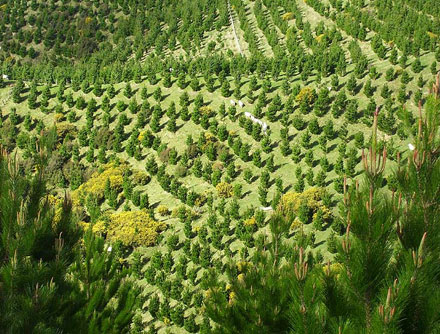
Forest owners in New Zealand want the government to get extra forest planting underway, rather than waiting for a report on climate change to be presented next year. Source: New Zealand Herald
Minister for Climate Change Paula Bennett has announced that the Productivity Commission will report back in June 2018, with recommendations for achieving a lower-carbon economy, to enable New Zealand to achieve its Paris Agreement commitment of reducing greenhouse gas emissions by 30% from 2005 levels, by 2030.
Forest Owners’ Association president Peter Clark said the time to start using trees to sequester carbon from them was now.
“The government is already supporting the up-take of electric vehicles without waiting for the Productivity Commission. There’s every reason to get the same impetus for tree planting, especially on farm and Maori-owned land,” he said.
“I agree that it might make sense for the government to take time to carefully work out a process to bring agriculture into the emissions trading scheme, for instance, but if you want to lock up carbon dioxide that is already in the atmosphere there is only one option. It’s a no-brainer. It doesn’t need a year to think about it. The answer is to get on and help get more trees planted.
“The recent Vivid Economics report on the need for nearly doubling the current 1.7 million hectares of New Zealand’s plantation forests was quite clear on this.”
The Vivid report had stated that planting new forests was the only technology currently known and implementable on a large scale that had the capacity to remove large amounts of carbon dioxide from the atmosphere.
Mr Clark said planning had to begin now to ensure labour availability and sufficient volume of seedlings.
“As it is, if there is going to be any meaningful expansion of planting, then it’ll take another year to build up seedling capacity, which will result in planting out in 2019,” he said.
“The government timetable will add at least an extra two years to that, more if legislation is required. That’s far too long a delay, especially when you consider that, even on the most rapid government timetable, it would then take until at least until 2026 to grow trees big enough to become effective carbon sinks.
“In the 1990s there was up to nearly 100,000ha a year of new plantings.
“We certainly wouldn’t get to that level again for many years, but we do need to make a start now to build up from a static, or even slightly declining, national forest area.
“For every year that land owners are putting trees into the ground there is an extra year of flexibility for policy-makers to take other measures to reduce carbon emissions. Already our plantation forests lock up, each year, more than half the carbon the whole of New Zealand agriculture produces.”
An expected reduction in available harvest volumes from about 2030 was also a critical factor in expanding forest areas.
“The sooner we get more trees into the ground the more likely the New Zealand processing industry will have the confidence to invest in modernising production,” he added.
“Timber availability in the next few years is sawmillers’ biggest concern. An efficient, high-tech milling industry here would both reduce costs for New Zealand timber consumers and add value to our exports.”
Meanwhile there were specific steps that the government could take now to encourage earlier planting.
“It could signal that if it was to allow imported carbon units, then they would not be linked to forest carbon units here.
“We’ve already seen the fiasco from importing basically bogus credits from the likes of Russia and Ukraine in the past, and we don’t want that again,” he added.
“It would also be unfair if the government were to bring in an ETS regime that penalised anyone who planted before the government worked out its ETS rules, so it ought to signal a level playing field now.”
It could also lead by example by planting more trees itself, at least in the short term. “We are talking about a huge change in our primary industries here,” he said.
“I absolutely agree we need to plan this all carefully, especially infrastructure with local government, but that’s no reason to delay making a start now, rather than waiting another couple of years to get going.”





